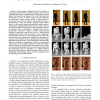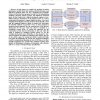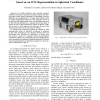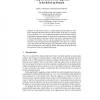329 search results - page 26 / 66 » A Neural Network-Based Approach to Robot Motion Control |
IROS
2009
IEEE
14 years 3 months ago
2009
IEEE
— Programming a humanoid robot to perform an action that takes the robot’s complex dynamics into account is a challenging problem. Traditional approaches typically require high...
ROMAN
2007
IEEE
14 years 2 months ago
2007
IEEE
— In this paper, performance of recently modified two-port time-domain passivity approach is evaluated under serious time-varying communication delay. First, recently proposed t...
CDC
2010
IEEE
13 years 3 months ago
2010
IEEE
In this paper, we consider the problem of motion planning for mobile robots with nonlinear hybrid dynamics, and high-level temporal goals. We use a multi-layered synergistic framew...
CDC
2008
IEEE
13 years 9 months ago
2008
IEEE
— For mobile platforms with steerable standard wheels it is necessary to precisely coordinate rotation and steering angle of their wheels. Especially for redundantly actuated pla...
ROBOCUP
2001
Springer
14 years 1 months ago
2001
Springer
In autonomous robotics, so-called artificial potential fields are often used to plan and control the motion of a physical robot. In this paper, we propose to use an artificial e...




